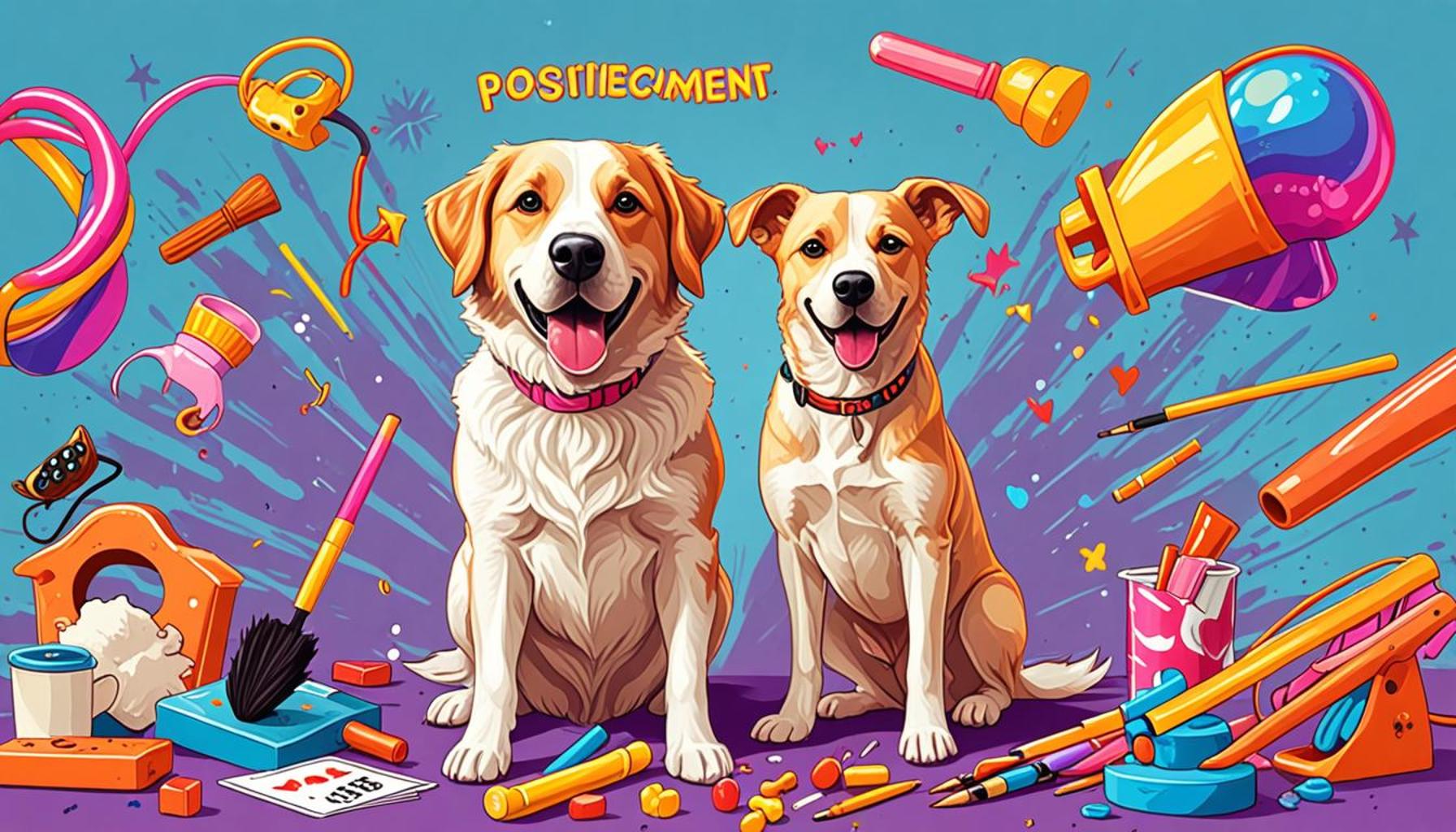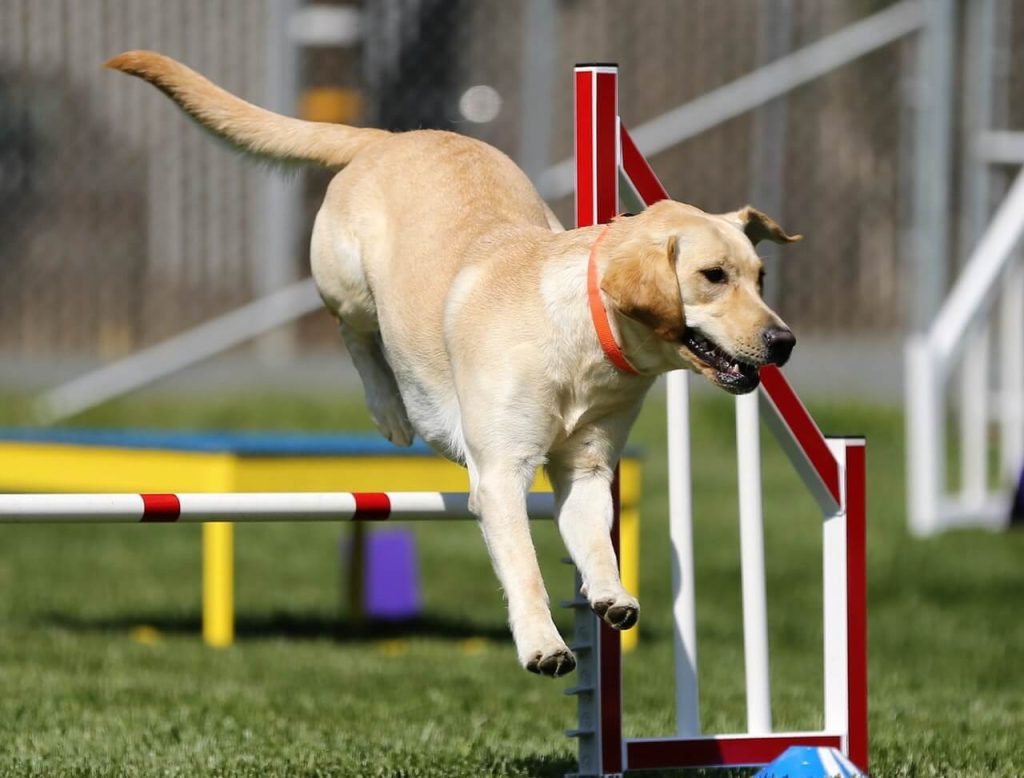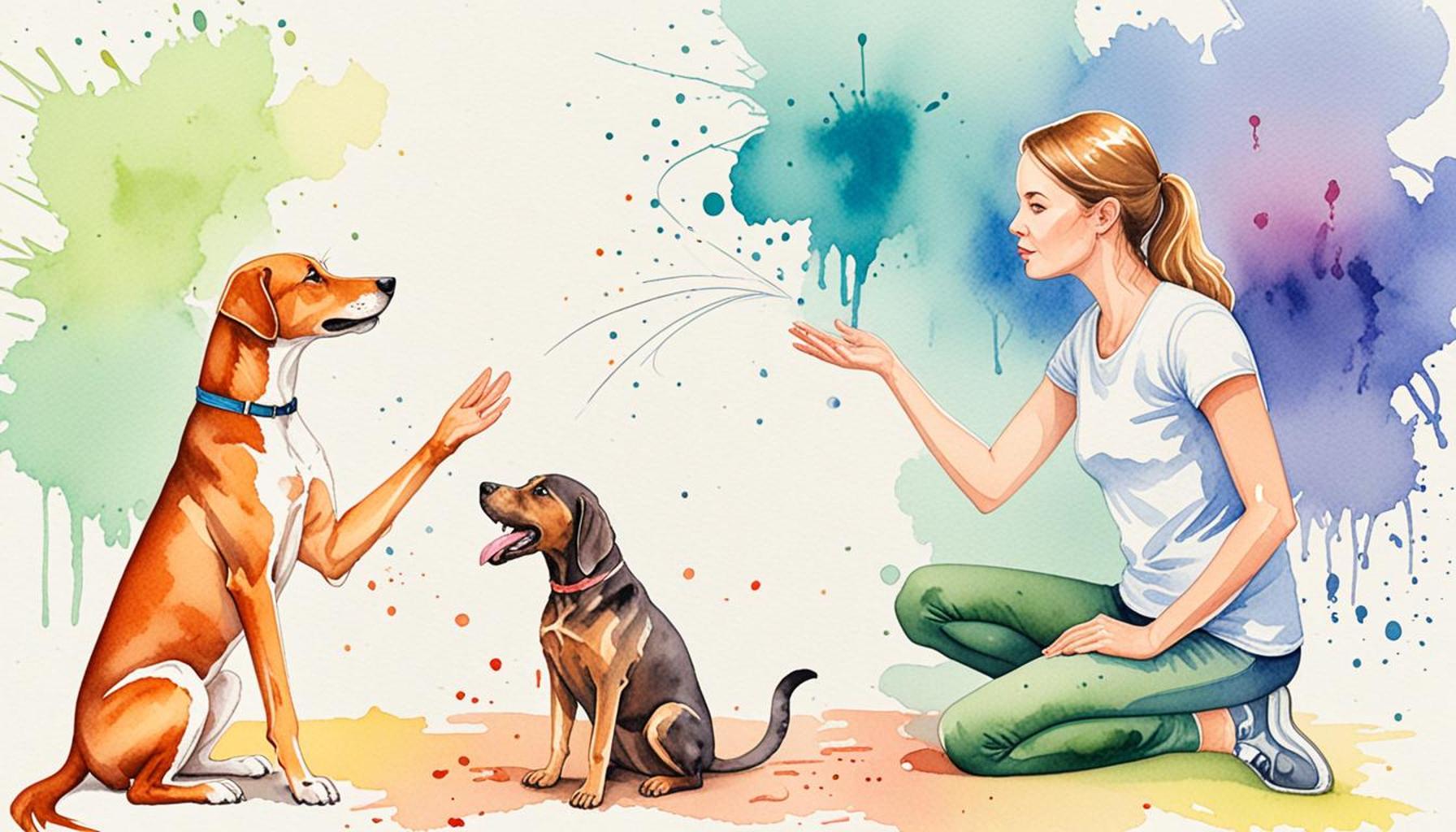Positive Reinforcement Techniques for Correcting Undesirable Behaviors in Dogs

Understanding Positive Reinforcement in Dog Training
Many dog owners grapple with their pet’s undesirable behaviors, from excessive barking to aggressive tendencies. It can be challenging to find effective ways to correct these actions without causing stress or anxiety. Fortunately, positive reinforcement techniques have proven to be a successful approach, not just for addressing bad habits but also for forging a deeper bond between dogs and their owners.
What is Positive Reinforcement?
At its core, positive reinforcement involves rewarding desired behaviors to encourage them in the future. This method leverages the natural learning process, where dogs associate specific actions with positive outcomes. Here are some key features of positive reinforcement:
- Rewards: Commonly used rewards include treats, verbal praise, or engaging in playtime. For instance, if a dog sits on command, offering a treat immediately reinforces that action, making it more likely the dog will repeat the behavior.
- Consistency: It is crucial to reinforce behaviors immediately after the desired action occurs. This instant feedback helps the dog make a clear connection. For example, if you want to teach your dog to stay, giving them a treat the moment they remain in position helps solidify this behavior in their mind.
- Patience: Learning takes time, especially for challenging behaviors. Not every dog learns at the same pace; thus, patience is essential during training sessions. Remember that frequent, short training sessions often yield better results than lengthy, infrequent ones.
Why Choose Positive Reinforcement?
Unlike punitive training methods, positive reinforcement emphasizes motivation over intimidation. It creates a more harmonious atmosphere for both dogs and their owners. Here are some of the standout benefits:
- Promotes trust and reduces fear: When dogs associate good behavior with rewards, they are less likely to feel anxious or fearful, fostering a trusting relationship with their owners.
- Enhances learning: This technique enhances the learning process by associating good behavior with enjoyable experiences. For instance, if a dog learns to come when called and receives a treat, it will likely respond positively in the future.
- Encourages better long-term compliance: Dogs trained using positive reinforcement often exhibit more reliable behavior over time, leading to a well-behaved companion.
By exploring these techniques, dog owners in the United States and beyond can cultivate a happy and well-adjusted canine companion. Studies suggest that dogs trained with positive reinforcement tend to display fewer behavior problems compared to those trained with negative methods. Additionally, examples from dog training communities illustrate how these strategies can effectively correct unwanted behaviors, leading dog owners to discover an array of positive reinforcement strategies. For instance, clicker training—a popular method—allows owners to mark desired behaviors with a click sound before providing a treat, streamlining the learning process.
Join us as we delve deeper into specific positive reinforcement strategies that can effectively correct unwanted behaviors in your dog. From teaching basic commands to addressing complex issues, understanding and utilizing positive reinforcement can transform your training sessions into productive and enjoyable experiences for both you and your dog.

DISCOVER MORE: Click here for effective training tips
Effective Positive Reinforcement Strategies for Dogs
When addressing undesirable behaviors in dogs through positive reinforcement, it’s essential to have a toolkit of strategies at your disposal. Each dog is unique, and understanding the variation in individual temperaments and responding to these diverse needs can make a significant difference in training outcomes. Below are several effective techniques that dog owners can incorporate into their training sessions:
1. Clicker Training
One of the most popular forms of positive reinforcement is clicker training. This method employs a handheld device that makes a distinct clicking sound to mark desired behaviors. When a dog performs the desired action—like sitting or lying down—the trainer clicks the device and immediately follows up with a reward. This technique helps dogs make a clear connection between the action and the positive reinforcement, capitalizing on their instinctual ability to learn through association.
2. Treat-Based Training
Treats are an invaluable tool for reinforcing positive behavior in dogs. By selecting small, tasty rewards that your dog genuinely enjoys, you can effectively motivate them to engage in desired actions. The key here is gradual introduction; start with high-value treats, gradually transitioning to lower-value ones as behaviors become ingrained. Over time, your dog will associate following commands with the delicious rewards awaiting them.
3. Verbal Praise
Another crucial aspect of positive reinforcement is using verbal praise. Dogs are social animals, and your approval means a great deal to them. Thus, enthusiastic vocal praise, accompanied by affectionate physical touch, can serve as a potent motivator for your canine companion. For instance, saying “Good boy!” or “Well done!” in a cheerful tone can bolster your dog’s confidence and willingness to repeat the desired behavior.
4. Affection and Playtime
Beyond treats, verbal praise, and clicker techniques, incorporating affection and playtime into your training sessions can yield fantastic results. Dogs are often energized and motivated by engaging in play. Use games they enjoy as rewards for good behavior—be it a fetch session or a little tug-of-war. This not only reinforces the positive behavior but also integrates quality bonding time with your pet.
5. Gradual Behavior Shaping
When combating more complex behavioral issues, the strategy of gradual behavior shaping can be incredibly beneficial. Rather than expecting immediate results, this method encourages small steps towards the desired action. For example, if you want to teach your dog to stop barking at strangers, begin by rewarding them for remaining quiet whenever a neighbor passes by. As you continue this practice, raise the criteria for reinforcement—reward them for longer periods of silence as they learn to respond without barking.
With these positive reinforcement techniques, you can begin to tackle your dog’s undesirable behaviors head-on. Understanding how to effectively implement these strategies allows you to create a structured, nurturing environment that benefits both you and your pet. Through consistent practice and engagement, you will not only see improvements in behavior but also deepen the trusting bond with your canine companion.
| Advantage | Description |
|---|---|
| Enhanced Bonding | Using positive reinforcement techniques fosters trust and strengthens the owner-pet relationship. |
| Behavior Modification | This method effectively decreases undesirable behaviors while promoting better habits through rewarding desirable actions. |
When employing *positive reinforcement techniques*, pet owners can witness a significant transformation in their furry friends. One noteworthy advantage is the enhanced bonding between the dog and owner. Instead of focusing on punishment, positive reinforcement encourages interactions filled with love and respect, fostering a healthy trust dynamic. When dogs perceive their owners as sources of rewards rather than fear, their willingness to learn and adapt increases dramatically.Additionally, these techniques contribute to effective behavior modification. By rewarding good behaviors and ignoring or redirecting negative actions, the likelihood of undesirable habits diminishes. For instance, if a dog jumps up on guests, rewarding calm behavior instead teaches them appropriate greetings. The outcome is a happier, well-adjusted dog who is eager to please, significantly improving the quality of life for both pet and owner. Discover the profound effects these strategies can have and ensure a more harmonious household for all.
DISCOVER MORE: Click here for expert tips
The Power of Consistency and Timing in Training
Successful training hinges not only on the techniques used but also on the principles of consistency and timing. These two elements serve as the backbone of positive reinforcement strategies, shaping a dog’s behavior over time and enhancing the learning experience.
6. Consistency in Commands
For dogs to understand what is expected of them, it is crucial for owners to maintain a consistent set of commands and cues. Whether it’s a verbal command like “sit” or a hand signal, using the same words and gestures every time will help eliminate confusion. For example, if you decide that “down” means your dog should lie down, be sure to use “down” exclusively, rather than mixing in synonyms like “lie down” sporadically. This predictability reinforces learning and establishes clear communication between you and your pet.
7. Timely Reinforcement
Timing is a critical factor in positive reinforcement. The closer the reward is given to the desired behavior, the more effective the reinforcement will be. Ideally, treats, praise, or play should be administered immediately after your dog successfully performs the desired action. For instance, if your dog sits on command, you want to reward them within seconds of them sitting, allowing them to associate the action with the positive outcome. This method of reinforcement creates a powerful learning experience that locks in the behavior you wish to encourage.
8. Using a Variety of Rewards
Just like humans, dogs can become bored with the same reward if utilized too frequently. This is why it’s essential to keep training sessions engaging by offering a variety of rewards. Consider alternating between different treats, toys, and activities. You might find that your dog responds particularly well to a squeaky toy one day, but prefers a special treat the next. Keeping it fresh not only enhances their enthusiasm for learning but also keeps the training dynamic and enjoyable.
9. Environment Management
Managing your dog’s environment is another effective method in utilizing positive reinforcement for correcting undesirable behaviors. By setting the stage for success, you can create a space where your dog is less likely to engage in unwanted actions. For example, if your dog tends to chew on furniture, providing them with an ample supply of chew toys in a designated area can encourage them to engage in appropriate chewing behavior. Additionally, removing distractions during training sessions can help your dog focus solely on the desired behavior.
10. Social Reinforcement
Finally, don’t underestimate the power of social reinforcement. Dogs are pack animals and thrive on social interactions. Utilizing group classes or playdates can significantly boost their motivation for positive behaviors. When dogs see their peers being rewarded for sitting or lying down on command, they may feel encouraged to mimic those actions. Moreover, group training fosters a sense of community, making the training process all the more enjoyable for both dogs and their owners.
Incorporating these elements into your training regime will not only help correct undesirable behaviors in your dog but will also promote a fun and engaging environment conducive to learning. The journey of training a dog using positive reinforcement is a rewarding experience that strengthens the bond between pet and owner, paving the way for a lifetime of mutual respect and understanding.
DISCOVER: Click here to learn how to prepare for your new furry friend
Conclusion: Building a Harmonious Relationship Through Positive Reinforcement
In the journey of dog training, positive reinforcement techniques stand out as the most effective and humane way to address undesirable behaviors. By consistently applying these methods, including clear commands, timely rewards, and a variety of reinforcements, you set the stage for your dog’s success. It’s important to remember that the relationship you build with your dog through this training process is as essential as the behaviors you are correcting.
By understanding your dog’s needs and motivations, you can tailor your approach to foster a nurturing environment that promotes good behavior. Environment management, alongside social interactions and group training sessions, enhances not only the learning experience but also the bond that you share with your pet. Remember that dogs thrive on positive social reinforcement, and incorporating playdates and group classes can catalyze their learning and enthusiasm.
Incorporating these techniques into your daily routine will not only lead to behavioral improvements but also enrich the overall dynamics of your relationship with your furry friend. As you embark on this rewarding endeavor, keep in mind that patience and commitment are key. Ultimately, positive reinforcement can transform misunderstandings into a synchronized partnership, paving the way for a loving and respectful companionship that will last a lifetime. Whether your goal is to correct a specific behavior or simply to cultivate better communication, the power of positive reinforcement offers endless possibilities for enriching your dog’s life and enhancing your shared experiences.


